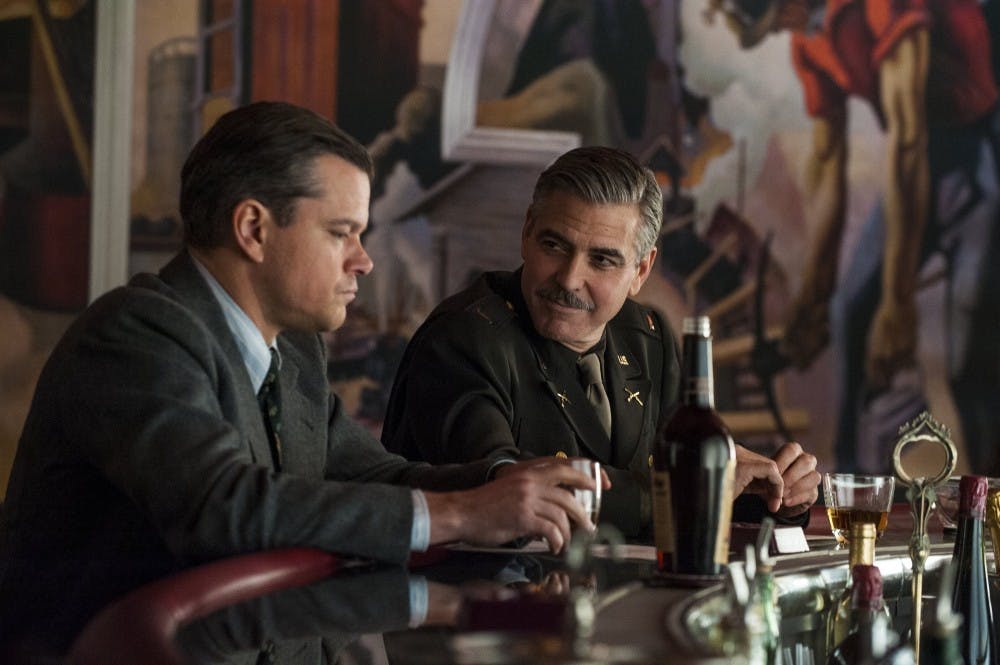WWII caper slick enough, but ultimately sadly nonessential
“The Monuments Men,” starring, co-written and produced by George Clooney, is a minor, passably entertaining WWII drama that does not fully utilize its amazingly talented cast.
The film tells the true but little known story of a unit of men who went around Europe during World War II trying to obtain the world-famous paintings and other artworks that Hitler ordered stolen. Hitler had planned to open a huge museum filled with the art when he rose to power.
Lt. Frank Stokes (George Clooney), an art conservationist at Harvard, led a team that included Lt. James Granger (Matt Damon), who worked at the Metropolitan Museum of Art; Sgt. Richard Campbell (Bill Murray), an architect; Sgt. Walter Garfield (John Goodman), a sculptor; Lt. Jean Claude Clermont (Jean Dujardin), a French character fictionalized for the film; Pvt. Preston Savitz (Bob Balaban), a theater and dance director; and Lt. Donald Jeffries (Hugh Bonneville), a British officer.
They were all greatly aided by German secretary Claire Simone (Cate Blanchett), who despised her Nazi superiors. She diligently recorded every work of art that came into the office into a ledger.
Many of the characters are just loosely based on real-life people, and their names have been changed. Cinema’s record of history always has to be taken with a grain of salt.
The structure of the film is disappointingly slack and disjointed. It is a film that seems like a combination of scenes in search of a completed work.
In a strange way, it is similar to Quentin Tarantino’s “Inglourious Basterds” in that both films cut back and forth among a large cast of characters in Europe during WWII. The difference is that Tarantino actually splits up the scenes into chapters with numbers and title cards. Each scene is a vignette that works both as a contained dramatic setpiece and a part of a whole.
“The Monuments Men” hops around between characters and countries without a strong narrative thread holding the scenes together.
Another major flaw with the film is that the characters are underwritten. They do not seem like real people but solely the actors playing them.
Matt Damon is Matt Damon (said in the “Team America” voice). Bill Murray is Bill Murray. One could argue that Bill Murray always more or less plays “himself” in films, but in his best work, he has strong material that makes his characters humorous or engaging to the audience. The actors’ charisma holds the film up to a large degree.
All this is not to say the film is a total disaster. With such talent in front of and behind the camera, it is never less than watchable. The film definitely has the tone of a ’50s or ’60s war film, where big-name stars played the heroic Americans and saved the day. Oh, a few people might have gotten killed, and one is reminded war is bad, but the view of war is sanitized and patriotic.
Telling the story of the Monuments Men in an old-fashioned style was probably the best way, but it lacks the tight plotting of those films.

